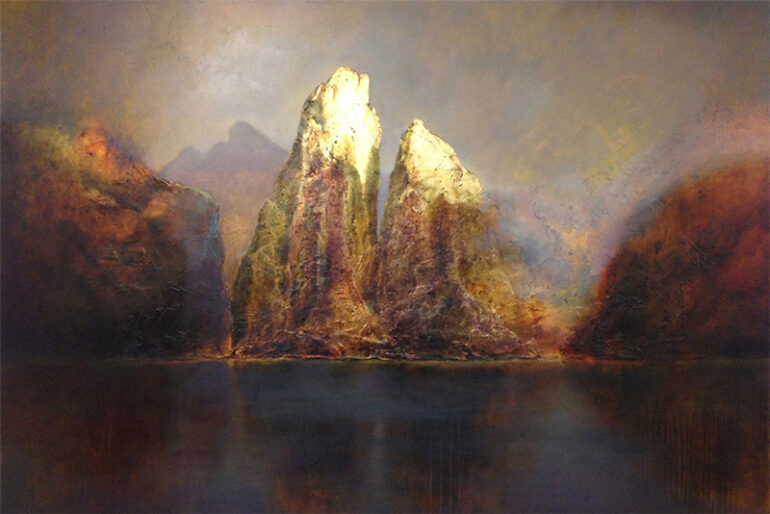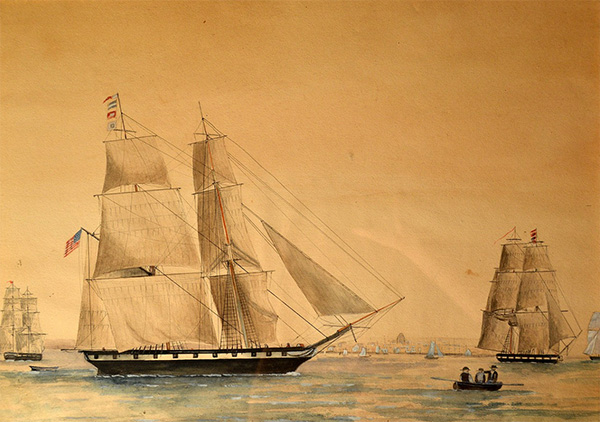A key trend in American art of the 19th century, luminism developed as a deep investigation of peaceful landscapes and natural light. Affected by the Hudson River School, luminist painters worked to convey the spiritual energy of the natural world by painstaking attention to detail and the careful balancing of light and shadow. Famous artists such as Fitz Henry Lane and Martin Johnson Heade created deeply felt, serene pieces that have influenced modern landscape painting with their ethereal beauty and emotional impact.
The Origins of Luminism in American Art
Midway through the 19th century, luminism first appeared in American painting, distinguished by its emphasis on peaceful landscapes and natural light. Aiming to convey a sense of peace and harmony, luminist painters were influenced by the Hudson River School painters and frequently painted quiet waterways, gentle sunsets, and foggy vistas. By using light and shadow to explore the spiritual and emotional core of nature, this creative movement sought to go beyond simple portrayal.
Techniques and Characteristics of Luminist Paintings
The fine detail work and the way light and shadow interact subtly set luminist paintings apart. In order to give their compositions a sense of depth and brightness, artists of this style used methods including smooth brushwork, exact portrayal of atmospheric elements, and a small color palette. The transparent quality made possible by glazes and thin paint layers enhanced the ethereal aspect of the landscapes shown in luminist paintings. Moreover, the tranquil and reflective scenes characteristic of luminism often evoke a meditative state in viewers, encouraging a deeper engagement with the artwork. This unique interaction between the viewer and the painting highlights the transformative power of luminism, as it not only captures the physical light in the landscape but also illuminates the interior landscapes of its audience. Such works invite contemplation on the quiet majesty of nature, reinforcing the emotional depth and serene beauty that luminist artists sought to express through their meticulous techniques.
Prominent Luminist Artists and Their Works
Renowned luminist painters with their own styles and contributions included John Frederick Kensett, Fitz Henry Lane, and Martin Johnson Heade. The spirit of luminism is embodied in the detailed portrayals of light and environment by Heade, the exact marine settings by Lane, and the tranquil landscapes by Kensett. Inviting spectators to ponder the beauty and peace of the natural world, their paintings frequently include wide sky, reflecting waterways, and a sense of quiet.
Legacy of Luminism in American Art
The great influence of capturing light and tranquilly in creative expressions is demonstrated by the luminism heritage in American art. This movement set the stage for the next generations of painters to investigate in their works the subtleties of light, atmosphere, and emotional resonance. The calm beauty and ethereal aspect that typified the works of luminist masters are being used as inspiration by modern landscape painters.
Finally, with its focus on portraying natural light and tranquil settings, the luminist movement in American art has irrevocably changed the visual landscape. Heade, Lane, and Kensett were among the luminist painters who produced works that go beyond simple depiction by carefully observing every detail and the way light and shadow interacted to evoke in viewers a sense of peace and beauty in the natural world. Painters of modern landscapes are nevertheless motivated by their heritage to investigate the emotional resonance inherent in the ethereal quality of light and environment.
Photo Attribution:
1st & featured image by https://commons.wikimedia.org/wiki/Category:Luminism_(American_art_style)#/media/File:Communion_40_x_60.jpg

